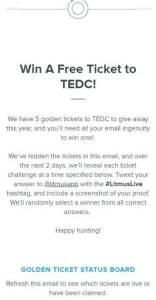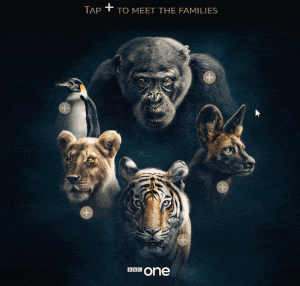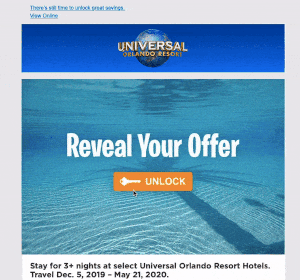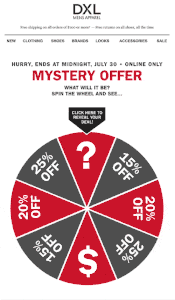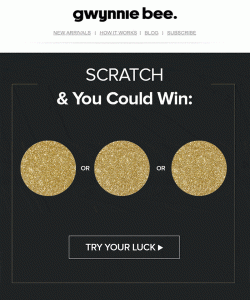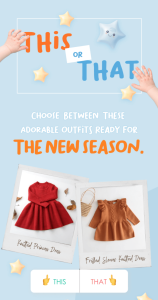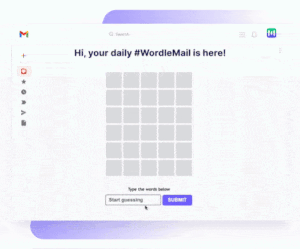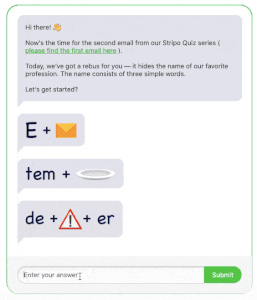Politics
Email Gamification: What It Is and How to Use It Wisely
Published
9 months agoon
By
Drew Simpson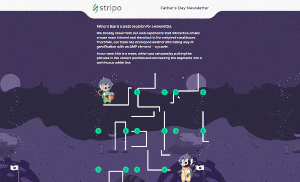
Who doesn’t love a good and entertaining game that brightens up any day? Games give us a feeling of control, accomplishment, and fulfillment. They appeal to our never-ending love of competition and joy.
Do you want to evoke the same feelings in your subscribers to motivate them to cooperate with your business and boost brand awareness? Email gamification is just what you need to make it happen!
In this article, you will learn what gamification is all about, the key reasons to use it in your marketing campaign, the traits of a successful game, and ten email gamification examples for your inspiration.
What Is Email Gamification All About?
Email gamification is the process of equipping “non-gaming” tasks such as customer engagement with game design elements. Based on three crucial principles (engagement, competition, and award), fun games like quizzes and tests in your messages will make your brand more memorable and appealing to collaborate with.
From spinning a wheel for a discount to using an interactive quiz to congratulate recipients on holidays, gamification is a robust tool that will enrich your email marketing campaign and entertain customers. A good game in your message should engage users, offer a prize for their efforts, and bring some healthy competition.
If you are still wondering whether you require email gamification, here are some actual statistics to consider:
Top 5 Reasons to Use Email Gamification in Your Upcoming Marketing Campaign
1. Grow your mailing list
By providing recipients with something more special than regular promotion emails, you motivate them to forward these messages to their friends and spread the word about your brand. Even if these potential leads are not sure whether they need your services yet, such entertaining content may motivate them to learn more about your company and subscribe to your newsletter.
2. Enhance cross-channel engagement
You can generate traffic to other business channels by engaging games in your messages. For instance, offer your customers to participate in a quiz, share results on social media, and tag your company account to get a prize (early access to your new product, a discount code, or a certificate).
3. Skyrocket email open rates
Regular emails with promo codes got rather tedious, and recipients tend to ignore such messages even when a discount is good enough. Email gamification creates a feeling of curiosity and motivates subscribers to wait for a new message from your brand to find a new game inside.
4. Build stronger customer relationships
Winning a game makes recipients feel delighted and creates a strong emotional connection with your company. We recommend you offer games regularly to help customers associate your messages with a feeling of accomplishment.
5. Entertain your subscribers
The core purpose of games in emails is to entertain recipients without the hard sell. You show your subscribers you care by offering them something fun and interactive. As a result, your customers will spend more time with your content and become more loyal to your brand.
When to Use Email Gamification
Now that you understand how you can benefit from games in your marketing campaign let’s take a quick look at the most suitable situations to use them:
1. Holiday and seasonal campaigns
Brighten up your subscribers’ holiday by sending them entertaining and interactive emails with small gifts like a personal discount or free shipping. Whether it’s Christmas puzzles or scratch cards for birthday promo codes, gamified emails bring some joy to your audience.
Seasonal campaigns are not all about Easter and Christmas holidays, though. Here is how Boldking provided free shipping to celebrate International Men’s grooming week:
2. Email campaign reactivation
Gamification is a powerful tool to reengage your subscribers and evoke their interest in your services. Even if customers stopped cooperating with your company for a while, fun games in your emails can become one of the decisive factors in winning subscribers back.
Take a look at how you can spark an interest in your recipients with hidden tickets and an additional level of anticipation:
Image Source: Provided by the Author; Thank you!
- 3. Rewards program
Your subscribers are probably used to receiving typical promotional emails with a discount for the next order. Instead of writing a standard message like “Here is your promo code to get 10% off your future purchase, ” let them play a fun game to win their reward. Let your customers understand — the more they cooperate with your brand, the more rewards they acquire.
In this example, users have to solve a simple yet engaging puzzle to win their discount:
What Makes a Great Game?
There are some standard rules for successful games in your emails. According to Jane McGonigal’s classification in her “Reality Is Broken” bestseller, we have to look at things from two points of view: subscribers and brands. These groups have different demands for a successful game:
Traits of a Good Game From Recipients’ Perspective
A goal should be straightforward and achievable. Don’t ask your subscribers, “Why am I spending my time on this?” when playing a game. You can describe the goal in a few words: “Let’s help a kitten find a way home!”.
If you want to go for something more challenging than “Click on the gift box to reveal a special offer”, explain to your subscribers how they can achieve the goal. For instance, “Answer 5 questions in 20 seconds to get a discount for your next order!”.
Gamers love to compare their results with other participants. If you want to create an email sequence with a long-time game, enable users to check leaderboards and share their achievements on social media. Such a high score listing is a great way to stimulate rivalry, monitor users’ progress, and boost engagement.
Yes, most people like to play and win their rewards. But still, some users may not feel like playing and having fun. Don’t make your emails annoying and allow recipients to skip a game.
Traits of a Good Game From a Business Perspective
To set up a budget appropriately, it’s essential to understand how many resources you are ready to invest. How many hours your development team will spend? What revenues are expected in the future? Will this game be reusable enough?
Placing games in emails just for the sake of entertainment is an unwise idea. Your marketing specialists must analyze numerous metrics, like your open rate and overall CTOR, to understand if gamification was successful enough to continue spending resources on it.
The faster you launch your campaign, the quicker you can get the first results and insights to analyze. What’s more, it’s essential to enable your teammates to use gamification elements quickly.
Top 10 Email Gamification Examples for Your Inspiration
Now that you know everything about email gamification and how to use it to delight your subscribers, let’s take a look at 10 top-notch games in emails to find inspiration and spark creativity.
1. Interactive holiday card
That’s how 1973 Ltd congratulated their subscribers on Christmas. It’s a simple but pleasant mini-game where a user just has to click on a gift box to get a holiday card.
2. Product presentation
Besides entertainment, gamification is also a splendid tool to present your new product or service. BBC used game design elements in this email to draw subscribers’ attention to their documentary about endangered animals.
- 3. Immediate rewards
The key idea of games in emails is to reward users right after they take a certain action. Here is an example of this approach used by Universal Orlando Resort.
- 4. Quests
A fun quest will draw attention to your company and enhance user engagement. Stripo created an Easter quest to provide recipients with a discount on the annual subscription.
5. Wheel of fortune
A true classic never goes out of style, right? A wheel of fortune is one of the most renowned games to provide discounts. What’s more, it’s easy to design and supported by most email clients.
6. Scratch cards
It’s a simple but effective gamification element to offer subscribers an instant reward. From discounts and certificates to free shipping and cash back, the only limit is your creativity.
7. Quizzes
Quizzes are a perfect way to entertain your subscribers and motivate them to share their results with friends. Madewell created a quick quiz with a personal outfit recommendation at the end.
8. This or that
Make your recipients feel special and valued by giving them a chance to share their preferences. When users choose an option they like, you can redirect them to your website to place an order.
9. Word games
If you want recipients to interact with your emails longer, equip your message with a word game. For instance, you can give users several attempts to guess the word of the day. We recommend you use words connected to your niche and the services you provide.
10. Gamified rewards program
If you have a multi-level loyalty program, make it look more achievable by showing it as a checklist to complete. By adding it to your emails, you will help subscribers understand what they need to do to achieve a higher level.
Empower Your Next Email Marketing Campaign With a Good Game
Email gamification is an effective tool to attract a wider audience, skyrocket your open rates, and build stronger customer relationships. Now you just have to think about your audience’s preferences and come up with a fun and engaging game for them. Are you ready to have some fun?
Dmitry Kudrenko
Founder and CEO of Stripo
15+ years in email marketing, 25+ years in software development, and my whole life in entrepreneurship. This mix allows me to use my business background to create efficient marketing strategies and implement them fast.
You may like
-


28 Powerful Email Marketing Statistics YSK
-


The Download: rub-on gene therapy, and safeguarding email memories
-
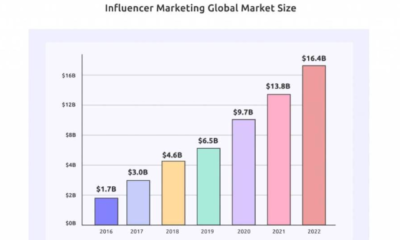

Generate Email Leads on Facebook & Convert Fans into Customers
-


Everything You Need to Know to Invest Wisely in the Cloud
-
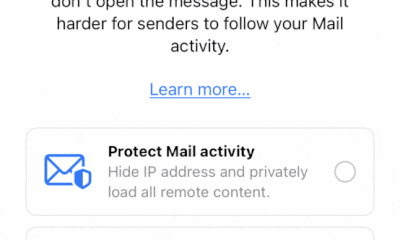

14 Email Marketing Trends to Look Forward to in 2023
-


How to Nail the Art of Visual Email Marketing
Politics
Fintech Kennek raises $12.5M seed round to digitize lending
Published
7 months agoon
10/11/2023By
Drew Simpson
London-based fintech startup Kennek has raised $12.5 million in seed funding to expand its lending operating system.
According to an Oct. 10 tech.eu report, the round was led by HV Capital and included participation from Dutch Founders Fund, AlbionVC, FFVC, Plug & Play Ventures, and Syndicate One. Kennek offers software-as-a-service tools to help non-bank lenders streamline their operations using open banking, open finance, and payments.
The platform aims to automate time-consuming manual tasks and consolidate fragmented data to simplify lending. Xavier De Pauw, founder of Kennek said:
“Until kennek, lenders had to devote countless hours to menial operational tasks and deal with jumbled and hard-coded data – which makes every other part of lending a headache. As former lenders ourselves, we lived and breathed these frustrations, and built kennek to make them a thing of the past.”
The company said the latest funding round was oversubscribed and closed quickly despite the challenging fundraising environment. The new capital will be used to expand Kennek’s engineering team and strengthen its market position in the UK while exploring expansion into other European markets. Barbod Namini, Partner at lead investor HV Capital, commented on the investment:
“Kennek has developed an ambitious and genuinely unique proposition which we think can be the foundation of the entire alternative lending space. […] It is a complicated market and a solution that brings together all information and stakeholders onto a single platform is highly compelling for both lenders & the ecosystem as a whole.”
The fintech lending space has grown rapidly in recent years, but many lenders still rely on legacy systems and manual processes that limit efficiency and scalability. Kennek aims to leverage open banking and data integration to provide lenders with a more streamlined, automated lending experience.
The seed funding will allow the London-based startup to continue developing its platform and expanding its team to meet demand from non-bank lenders looking to digitize operations. Kennek’s focus on the UK and Europe also comes amid rising adoption of open banking and open finance in the regions.
Featured Image Credit: Photo from Kennek.io; Thank you!
Radek Zielinski
Radek Zielinski is an experienced technology and financial journalist with a passion for cybersecurity and futurology.
Politics
Fortune 500’s race for generative AI breakthroughs
Published
7 months agoon
10/11/2023By
Drew Simpson
As excitement around generative AI grows, Fortune 500 companies, including Goldman Sachs, are carefully examining the possible applications of this technology. A recent survey of U.S. executives indicated that 60% believe generative AI will substantially impact their businesses in the long term. However, they anticipate a one to two-year timeframe before implementing their initial solutions. This optimism stems from the potential of generative AI to revolutionize various aspects of businesses, from enhancing customer experiences to optimizing internal processes. In the short term, companies will likely focus on pilot projects and experimentation, gradually integrating generative AI into their operations as they witness its positive influence on efficiency and profitability.
Goldman Sachs’ Cautious Approach to Implementing Generative AI
In a recent interview, Goldman Sachs CIO Marco Argenti revealed that the firm has not yet implemented any generative AI use cases. Instead, the company focuses on experimentation and setting high standards before adopting the technology. Argenti recognized the desire for outcomes in areas like developer and operational efficiency but emphasized ensuring precision before putting experimental AI use cases into production.
According to Argenti, striking the right balance between driving innovation and maintaining accuracy is crucial for successfully integrating generative AI within the firm. Goldman Sachs intends to continue exploring this emerging technology’s potential benefits and applications while diligently assessing risks to ensure it meets the company’s stringent quality standards.
One possible application for Goldman Sachs is in software development, where the company has observed a 20-40% productivity increase during its trials. The goal is for 1,000 developers to utilize generative AI tools by year’s end. However, Argenti emphasized that a well-defined expectation of return on investment is necessary before fully integrating generative AI into production.
To achieve this, the company plans to implement a systematic and strategic approach to adopting generative AI, ensuring that it complements and enhances the skills of its developers. Additionally, Goldman Sachs intends to evaluate the long-term impact of generative AI on their software development processes and the overall quality of the applications being developed.
Goldman Sachs’ approach to AI implementation goes beyond merely executing models. The firm has created a platform encompassing technical, legal, and compliance assessments to filter out improper content and keep track of all interactions. This comprehensive system ensures seamless integration of artificial intelligence in operations while adhering to regulatory standards and maintaining client confidentiality. Moreover, the platform continuously improves and adapts its algorithms, allowing Goldman Sachs to stay at the forefront of technology and offer its clients the most efficient and secure services.
Featured Image Credit: Photo by Google DeepMind; Pexels; Thank you!
Deanna Ritchie
Managing Editor at ReadWrite
Deanna is the Managing Editor at ReadWrite. Previously she worked as the Editor in Chief for Startup Grind and has over 20+ years of experience in content management and content development.
Politics
UK seizes web3 opportunity simplifying crypto regulations
Published
7 months agoon
10/10/2023By
Drew Simpson
As Web3 companies increasingly consider leaving the United States due to regulatory ambiguity, the United Kingdom must simplify its cryptocurrency regulations to attract these businesses. The conservative think tank Policy Exchange recently released a report detailing ten suggestions for improving Web3 regulation in the country. Among the recommendations are reducing liability for token holders in decentralized autonomous organizations (DAOs) and encouraging the Financial Conduct Authority (FCA) to adopt alternative Know Your Customer (KYC) methodologies, such as digital identities and blockchain analytics tools. These suggestions aim to position the UK as a hub for Web3 innovation and attract blockchain-based businesses looking for a more conducive regulatory environment.
Streamlining Cryptocurrency Regulations for Innovation
To make it easier for emerging Web3 companies to navigate existing legal frameworks and contribute to the UK’s digital economy growth, the government must streamline cryptocurrency regulations and adopt forward-looking approaches. By making the regulatory landscape clear and straightforward, the UK can create an environment that fosters innovation, growth, and competitiveness in the global fintech industry.
The Policy Exchange report also recommends not weakening self-hosted wallets or treating proof-of-stake (PoS) services as financial services. This approach aims to protect the fundamental principles of decentralization and user autonomy while strongly emphasizing security and regulatory compliance. By doing so, the UK can nurture an environment that encourages innovation and the continued growth of blockchain technology.
Despite recent strict measures by UK authorities, such as His Majesty’s Treasury and the FCA, toward the digital assets sector, the proposed changes in the Policy Exchange report strive to make the UK a more attractive location for Web3 enterprises. By adopting these suggestions, the UK can demonstrate its commitment to fostering innovation in the rapidly evolving blockchain and cryptocurrency industries while ensuring a robust and transparent regulatory environment.
The ongoing uncertainty surrounding cryptocurrency regulations in various countries has prompted Web3 companies to explore alternative jurisdictions with more precise legal frameworks. As the United States grapples with regulatory ambiguity, the United Kingdom can position itself as a hub for Web3 innovation by simplifying and streamlining its cryptocurrency regulations.
Featured Image Credit: Photo by Jonathan Borba; Pexels; Thank you!
Deanna Ritchie
Managing Editor at ReadWrite
Deanna is the Managing Editor at ReadWrite. Previously she worked as the Editor in Chief for Startup Grind and has over 20+ years of experience in content management and content development.



